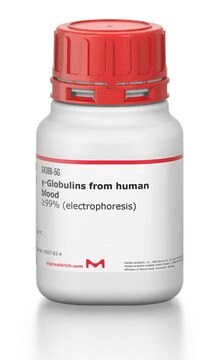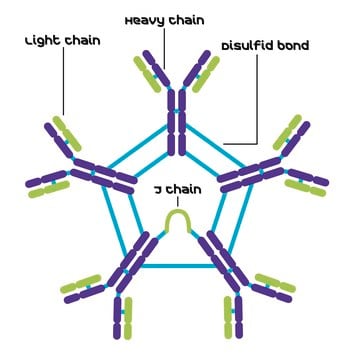ALP60
Apolipoprotein C-III, human
Sinónimos:
ApoCIII
Iniciar sesiónpara Ver la Fijación de precios por contrato y de la organización
About This Item
UNSPSC Code:
12352202
eCl@ss:
32160405
NACRES:
NA.41
Productos recomendados
biological source
human
Quality Level
100
300
assay
>95% (SDS-PAGE)
form
liquid
manufacturer/tradename
Chemicon®
NCBI accession no.
UniProt accession no.
General description
Apolipoprotein C-III (APOC3) is a multifaceted protein, localized on circulating triglyceride-rich lipoproteins (TRLs), high-density lipoprotein (HDL), low-density lipoprotein (LDL), and very-low-density lipoprotein (VLDL). The APOC3 gene is mapped to the human chromosome 11q23.3. It is mainly expressed in hepatocytes and to a lesser extent in enterocytes.
Product Source: Human plasma tested negative for HBsAg and HIV-I, HIV-II, HBc and Hepatitis C antibodies. All blood products should be treated as potentially infectious.
Application
Apolipoprotein C-III (APOC3), human has been used to determine its effect reconstituted high-density lipoprotein (rHDL) containing apoA-I. It has also been used to test the effects of the exogenous exchangeable apolipoproteins on low-density lipoprotein (LDL) binding to heparin.
Biochem/physiol Actions
Apolipoprotein C-III (APOC3) is involved in triglyceride metabolism and atherosclerotic lesion formation. It also regulates pathological processes involved in atherosclerosis. APOC3 stimulates hypertriglyceridemia (HTG) through various mechanisms. It functions as a lipoprotein lipase (LPL) inhibitor and also interrupts the clearance of triglyceride-rich lipoproteins (TRLs)-remnants. Mutations in the gene lead to lower plasma glycerides and lower cardiovascular disease risk.
The physiological role of Apo CIII is unknown. It is suggested that Apo CIII may inhibit the activation of lipoprotein lipase by Apo CII.
Physical form
Liquid in 10 mM NH4HCO3, pH 7.4.
Storage and Stability
Maintain at -20ºC or below in undiluted aliquots for up to 12 months. Avoid repeated freeze/thaw cycles. All blood products should be treated as potentially infectious.
Legal Information
CHEMICON is a registered trademark of Merck KGaA, Darmstadt, Germany
Disclaimer
Unless otherwise stated in our catalog or other company documentation accompanying the product(s), our products are intended for research use only and are not to be used for any other purpose, which includes but is not limited to, unauthorized commercial uses, in vitro diagnostic uses, ex vivo or in vivo therapeutic uses or any type of consumption or application to humans or animals.
Storage Class
12 - Non Combustible Liquids
wgk_germany
nwg
flash_point_f
Not applicable
flash_point_c
Not applicable
Certificados de análisis (COA)
Busque Certificados de análisis (COA) introduciendo el número de lote del producto. Los números de lote se encuentran en la etiqueta del producto después de las palabras «Lot» o «Batch»
¿Ya tiene este producto?
Encuentre la documentación para los productos que ha comprado recientemente en la Biblioteca de documentos.
Rayabarapu Pranavchand et al.
Lipids in health and disease, 16(1), 116-116 (2017-06-15)
Given the characteristic atherogenic dyslipidemia of south Indian population and crucial role of APOA1, APOC3, APOA4 and APOA5 genes clustered in 11q23.3 chromosomal region in regulating lipoprotein metabolism and cholesterol homeostasis, a large number of recently identified variants are to
Kyung-Hyun Cho
Molecules and cells, 27(3), 291-297 (2009-03-28)
Apolipoprotein (apo) C-III is a marker protein of triacylglycerol (TG)-rich lipoproteins and high-density lipoproteins (HDL), and has been proposed as a risk factor of coronary heart disease. To compare the physiologic role of reconstituted HDL (rHDL) with or without apoC-III
Nuestro equipo de científicos tiene experiencia en todas las áreas de investigación: Ciencias de la vida, Ciencia de los materiales, Síntesis química, Cromatografía, Analítica y muchas otras.
Póngase en contacto con el Servicio técnico






